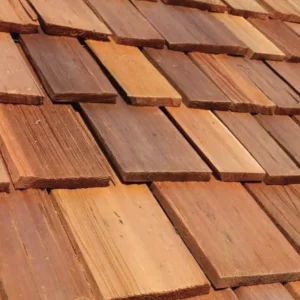Heat Tape Buying Guide
Radiant Solutions Heat Tape Products
Q: How do I figure out what I need?
There are three categories of Radiant Solutions Products used in a heat tape installation. Two are required and the third is strongly recommended (and will save you money over time). Those categories are:
Heat Tape
Heat Tape Pro works on all types of roofs & gutters, is weather resistant and has a 10-year warranty.
Roof Clips
The type of roof you have will determine which clips you need for you heat tape installation
Switches/Controls
Reduce your energy footprint & save on operating cost with a thermostatic switch or control
A:
Since Heat Tape Pro will work on all rooftops & gutters and you can implement an optional switch/controller in any installation, the only thing you need to determine is: which clip you need to get. To determine this, you need to know what roof type you have.
I know What Kind of Roof I have
Identify the Clips Needed for Your Roof
I Don't know what Kind of Roof I Have
Click Here to Identify Your Roof
I Only need Heat Tape for My Gutters
Click Here to Learn About Heat Tape in Gutters
Q: How do I figure out how much I need?
Once you have determined the type of clip you need for installation, the question turns to “how much do I need?”. Our heat tape is available from lengths of 6-feet to 150-foot. How do you know which length cable to buy and how many clips to buy with it?
A:
There are two steps to determine how much heat tape and roof clips you need. (1) Make simple measurements regarding your installation, and (2) Use Our Heat tape Calculator to determine amounts from those measurements. More info below:
Guide for Measuring for Heat Tape
A simple step-by-step guide on how to measure your roof to determine how much heat tape you need.
Calculate Heat Tape & Clips Needed
The Radiant Solutions tool for Calculating Heat tape and Clip needs, based on your measurements and a couple factors
Identifying Your Roof Type
Knowing what kind of roof you have in an important aspect of understanding your installation and choosing which roof clips you will need to install your heat tape. Roofs can be made from different materials and have different components and form-factors. Radiant Solutions Company is the only manufacturer of heat tape to recognize this and address each type of roof with a specific solution that works best.
Types of Roofs in Areas Where Ice dams Occur, Generally Fit Into the Following Types:

Asphalt Shingles
By far the most popular type of roof in areas cold enough for ice dams to form, Asphalt Shingles include many colors and styles. The relatively similar thickness of asphalt shakes allows for simple clip selection.

Metal Roofs
Growing in popularity, Metal roofs have several different sub-types with distinct features requiring different clip types. Metal roof types can look vastly different from one type to the next.

Cedar & Synthetic Cedar
Whether it be natural material or a synthetic representation of the natural look, these roof types require specific kinds of clips that have a thicker grip and don’t put holes in your roof.
Cedar & Synthetic Cedar:
Cedar Roof Guide Coming Soon

Flat Roofs
Made from multiple material types and ranging from low-pitch to no-pitch, flat roofs are unique in that they don’t have a standardized heat tape installation, since ice dam formation can occur almost anywhere.
Flat Roofs:
Flat Roof Guide Coming Soon

Slate & Synthetic Slate
Found on some of the oldest homes in the U.S., slat and synthetic slate shingles have a mid-thickness profile that require a specific clip that
What About Gutters?
A Gutter's Role in the Dangers of Ice Dams is Often Misunderstood
The point of having heat tape on your roof is to prevent the build up of water in spots where it cannot escape on your roof and therefor causes damage. By properly positioning heat tape on your roof and in your gutter you are creating persistent channels to let water flow away from the roof where it will not cause damage. It’s important to understand that it’s the dam preventing water from escaping your roof that should be the point of focus. Even more so: it’s the water held back by the dammed ice that will cause the problems.
Often times ice can also build up in gutters, however it is paramount to address your roof first and foremost.
Heat Tape in Your Gutters & Downspouts is Important
As support the heat tape that gets installed on your roof, Heat Tape in gutters does play an important role. To create a complete path for the water to escape from your roof to the ground, it is often necessary to install heat cable inside the gutter basin and down the downspout. Our Heat Tape Calculator includes provisions for gutter and downspout installation, regardless of roof type.
